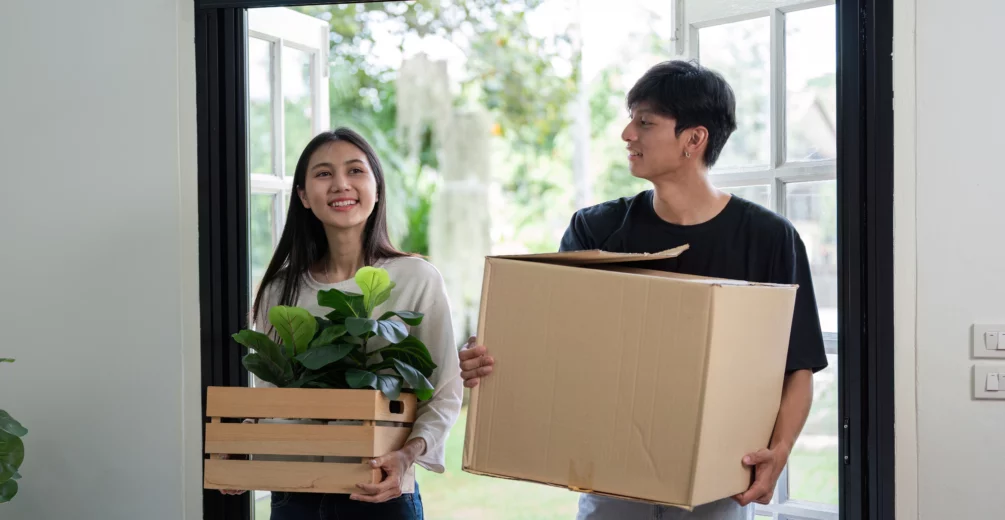
How to Pack Small Appliances for Moving
By maffuccimoving December 01, 2024
What do you start with when packing? The big stuff or the small stuff? It doesn’t necessarily matter which you pick, but it does matter how you pack them. Small items tend to be fragile. Sometimes, they’re even oddly shaped. Ensuring they’re packed correctly, with plenty of cushion and support, is the only way to get them from point A to point B safely. Contact a professional moving company if you’d like help figuring out how to pack your small appliances.
Maffucci Moving, a trusted agent of Bekins, the nation’s most trusted relocation services provider, brings over 100 years of experience to the table. Our numerous awards, including the Platinum Hauling and Sales award, Agent of the Year, and Agent of the Month, are a testament to our expertise. As a BBB-Accredited and American Trucking Association’s Moving and Storage Conference business, we have been helping people make successful moves for generations.
Pre-Packing Preparations
As you prepare for your move, it’s crucial to clean your items before packing them. Even if you haven’t used them recently, skipping this step can lead to the growth of bacteria and the development of unpleasant odors from leftover food particles. Maffucci recommends wiping down the surface of your items with a damp cloth and thoroughly drying them. When cleaning small kitchen appliances, it’s important to follow the specific cleaning processes recommended by the manufacturer to avoid damage.
After finishing the cleaning, prepare your smaller appliances for efficient packing. Kitchen appliances have a lot of buttons, knobs, and other attachments that make them fit oddly in cardboard boxes. Remove detachable parts to prevent them from breaking off in transport and causing further damage to your items. Place them in a clearly labeled bag in the box next to the item they belong to so they don’t get separated. Tape them shut for parts that can’t be removed but may shift during transport. Parts you may be able to remove include:
- Microwave trays
- Food processor containers and blades
- Blender containers
- Toaster oven and air fryer trays
- Coffee pots
Packing 101
Take one final look at your items and decide if there are any you can go without. Donate any unwanted items before you start packing to minimize mess. After completing preparations, you’re ready to start packing. Using top-quality packing materials is the best way to ensure your items get to where they’re going safely. Generally, you can pack fragile appliances with the same materials you use for everything else. Materials include:
- Paper pads
- Packing tape
- Cardboard boxes
- Packing paper
- Bubble wrap
- Zip ties
- Makers
- Labels
- Plastic baggies
The Art of Boxes
When gathering your materials, be sure to get various-sized boxes. Medium boxes will work for most items; smaller boxes are ideal for accessories and attachments to more oversized items. Avoid the temptation of packing multiple small appliances together. Even though they’re not very large, having too many together will strain the box, causing it to break. As you load items into boxes, distribute the weight evenly to stay stable during transport. If you have kept the original packaging, Maffucci recommends using it since it’s been specifically designed to keep your belongings safe.
Packing Fragile Items
Pay close attention if you have fragile items made with glass or ceramics. The first step in securing fragile items is preparing the box. Line the bottom with crumpled packing paper or cushioned materials such as bubble wrap and packing peanuts. After that, lay additional packing materials flat on a table to easily wrap up items. Ensure you only wrap one item at a time in paper pads— multilayered paper wraps are usually used to protect large, fragile items— covering all sides and stuffing the ends into openings or taping them closed. Place the heaviest items on the bottom of the box, putting the lighter ones on top.
Securing for Transport
To finish packing your fragile items, fill any gaps with extra packing materials to prevent jostling that could damage your belongings. Gently shake the box to ensure you don’t hear glass or ceramic clinking or feel too much movement. If you’re satisfied, firmly seal the box with packing tape. Cover any openings to prevent dust, dirt, moisture, or other elements from getting in and potentially causing damage. Maffucci recommends double-taping each seal. Don’t forget to label each box clearly, including:
- The room it belongs in
- Its contents
- Whether or not it’s fragile
- Brief description (i.e., accessories packed separately)
Proper labeling will make unpacking a breeze and safeguard your possessions from getting misplaced or broken during transportation. When our movers see a warning stating that an item is ‘fragile’ or should be ‘handled with care,’ they’ll pay extra attention to it.
Maffucci Moving: Where the Small Things Matter
Depending on when you pack your small appliances, all you may have left to do is wait for moving day! But remember, moving doesn’t have to be a hassle. Hiring a professional mover is the easiest way to have a minimally stressful experience. Maffucci’s highly trained team will help you create a custom moving plan to meet your needs. For help with packing, loading, moving, and situating items of every size, call Maffucci.
Ready to make your move stress-free? Contact Maffucci Moving today for expert packing and moving services tailored to your needs! Our experienced team is here to help ensure your small appliances—and everything else—arrive safely at your new home. Get a free quote now!
By maffuccimoving December 01, 2024
